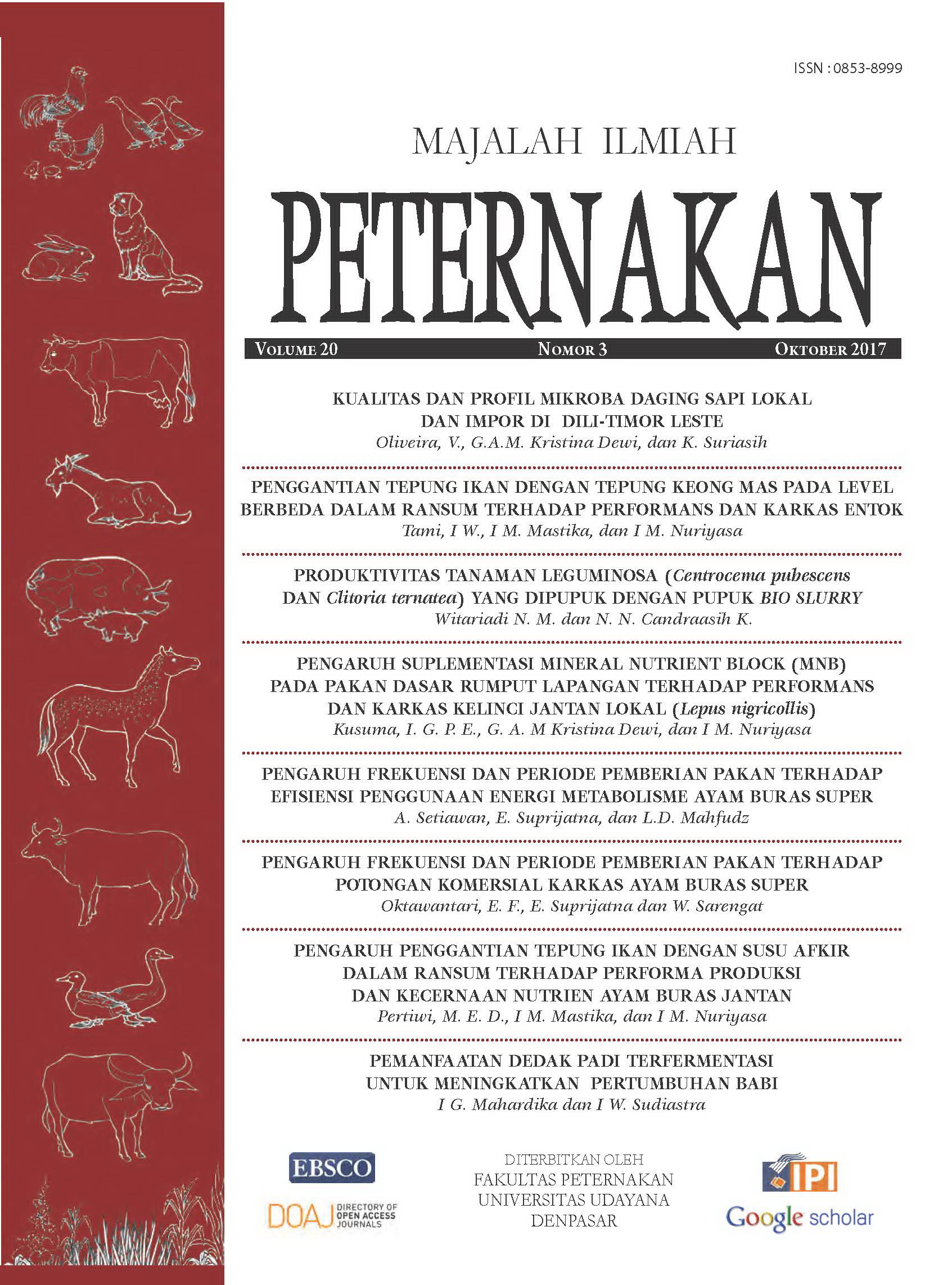PRODUKTIVITAS TANAMAN LEGUMINOSA (Centrocema pubescens DAN Clitoria ternatea) YANG DIPUPUK DENGAN PUPUK BIO SLURRY
Abstract
This study aims at determining the productivity of legume fertilized with bio slurry. The study was conducted
by using a complete randomized design (CRD) with two factors as factorial design. The first factor is the type of
legume plants, namely Centrocema pubescen and Clitoria ternatea. The second factor is the dosage of bioslurry
fertilizer such as fertilizer as control; 10 tons/ha of bioslurry fertilizer; 20 tons/ha of bioslurry fertilizer; 30 tons/
ha of bio slurry fertilizer. Variables observed were growth (plant height, number of tillers, and number of leaves);
production variables (leaf dry weight, stem dry weight, root dry weight and total dry weight of forage); and growth
characteristics (leaf area, leaf dry weight ratio of dry weight rod, and ratio of the total dry weight of forage with root
dry weight). The results showed that the bio-slurry fertilizer increase productivity and legume plants (Centrocema
pubescen and Clitoria ternatea). The differences of 10-30 tons/ha bioslurry treatment significantly (P<0.05)
increase number of tillers, number of leaves, total forage dry weight, dry weight of leaf, stem dry weight, root dry
weight, leaf area, ratio of total dry weight of forage with roots and leaves with the stem ratio). It can be concluded
that higher productivity of legume plants species found significantly (P<0.05) on Clitoria ternatea with 30 tons/ha
dosages of bioslurry fertilizer as the best result.






